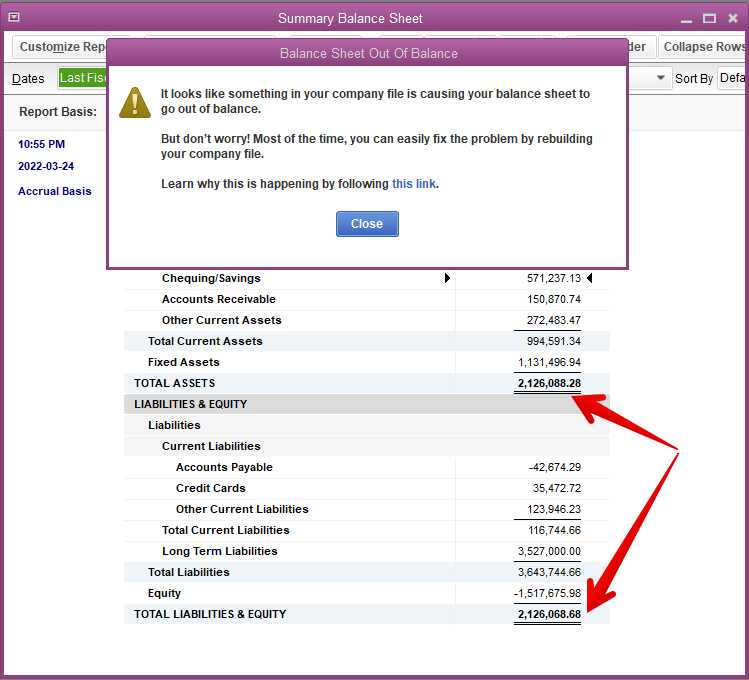Home >> Case Studies
Fixing a 3.5GB QuickBooks File After a Rebuild Corrupted Inventories
Case
Study
A private pet food manufacturing business chose QuickBooks Enterprise because of its robust inventory management module. The company had used the file beyond its optimal limit and after a regular backup and rebuild, the Quickbooks file instantly became unstable, with financial statements not balancing.
The solution to fix the Quickbooks corrupt file was a surgical transplant of an entire year’s financial data into a completely new company file. To minimize interruptions and a costly rebuild like this, we recommended an annual maintenance plan and preparing for a new continuation file when nearing the program’s optimal bounds.
The Problem
After doing a standard backup and verification check, the Balance Sheet report was not balancing (total assets not equalling total liabilities with total equities). The size of the company’s Quickbook file had grown to almost 3.5 gigabytes containing about 15 years’ worth of data. During the verification check, QuickBooks will spot file errors and data corruption before trying to fix it in its “rebuild” process.
After the rebuild, one of the most significant issues we found was that over $100,000 of accounts payables vanished, along with massive drops in inventory valuations and dollar values in Retained Earnings.

The majority of the issue lay in the inventory items. There were very old inventory items that were not used anymore with residual stock balances, some with negative values. Somehow several of these items were made inactive. QuickBooks normally prohibits making it inactive if an item or account has a balance).
Another issue from the rebuild, is the corruption of memorized reports containing old and inactive GL accounts
The Business
A natural pet foods manufacturer based in Port Coquitlam, Canada that has seen rapid growth over the past decade.
The Solution
GoodReports created a new company file and transferred thousands of transactions, comprising one year of data. We batch-loaded one month at a time to validate account balances and reconciliations.
Since the QuickBooks Canadian edition does not have the feature to condense file size or “Clean Up Company Data,” the only option was to create a new company file and transfer a year’s worth of data to the new books. No Intuit service will copy and paste certain transactional data sets from an old book to a new one in the same QuickBooks desktop product line.
Although handy, the condensed file size and the “Clean Up Company Data” features have limitations, and some have reported that they may cause other problems. We offer other QuickBooks File Services to manage this situation. Always consult a QuickBooks Certified ProAdvisor before proceeding on your own. Find a QuickBooks ProAdvisor here.
Although there are no theoretical limits on file sizes, it’s best to start planning for a new company file in the following situations:
- When your active QuickBooks Enterprise file gets close to 1 gigabyte (Intuit notes, the maximum should be 1.5 gigabytes)
- When it reaches ten years of data, or reaches the 100,000 “targets,” whichever comes first.
- For QuickBooks Pro and Premier editions, start planning when the file size exceeds 150 megabytes (Intuit notes, the maximum should be 500 megabytes) or reaches 10,000 “targets.”
These are general rules of thumb, as there are no limits within the program or warning messages for these limits – most of the time, you get error messages if the file use is prolonged and in the worst cases, a corrupted QuickBooks file – a sign it’s already too late.
If you experience QuickBooks error messages or require a maintenance plan, look at our QB File Services.
Summary of Best Practices
The key takeaway to the solution is to keep up regular maintenance of the book at least every year. Visit our best practices page to see strategies you can use.
“We had an old and very large company file that became corrupted and resulted in the balance sheet report not balancing. Intuit does not have a standard way to fix this so thankfully Chad had the skills and experience to rebuild a new company file and transfer 12 months of financial data with accuracy and very little manual entry.”
